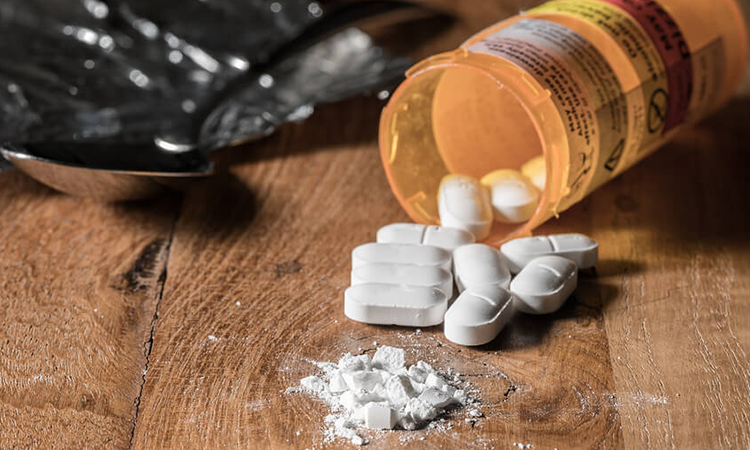
How Long Does Oxycodone Stay in Your System?
Oxycodone is detectable for:
- Urine test: 3-4 days
- Hair test: 90 days
- Blood test: 24 hours
- Saliva: 4 days
The half-life of Oxycodone, which is the time required for half of the drug to be eliminated from the body, is between 3.5 to 5.5 hours. Despite only taking around a day for the body to rid itself of oxycodone, the process of breaking down the active ingredients creates byproducts called metabolites, which are detected by these tests.
The length of time oxycodone stays in a person’s system is determined by several factors, including the following:
- Age
- Gender
- Ethnicity
- Weight
- Height
- Body fat percentage
- Body mass index
- Presence of food in GI tract
- Kidney and liver function
- Dosage consumed
- Duration of consumption
- Presence of alcohol or other opioid drugs
Oxycodone Facts
As a prescription medication, oxycodone is indicated to treat short-term moderate to severe pain such as from trauma, injury or surgery, but has also been used to treat chronic pain such as that related to cancer or palliative care. Oxycodone may be taken by itself or in combination with another medication, such as aspirin or acetaminophen.
Oxycodone can be administered in many different forms, such as by tablet, capsule, liquid solution, injection, suppository, or intranasally (snorting).
Brand names for oxycodone include the following:
- Tylox
- Percodan
- OxyContin
- Percocet
- Roxicet
- Endocet
- Percodan
- Endodan
- Roxicodone
- Oxynorm
- Endone
- Proladone
- Targin
- Xtampza
How Does Oxycodone Work?
Opioid-based substances stimulate the production of beta-endorphins, mitigating pain. Alongside the analgesic effect, beta-endorphins repress the production of GABA. GABA, when released, inhibits the production of dopamine.
Therefore, opioids increase dopamine concentrations in the brain, inducing feelings of happiness and euphoria. These effects can cause users to become dependent upon and addicted to opioids.
Oxycodone Abuse Or Addiction
Compared to other opioids, oxycodone is moderately potent, but still carries a high potential for abuse and habit formation. Oxycodone abuse may not be immediately noticeable because it can be legally obtained by prescription and sans drug paraphernalia. Because of this, it is important to know and be able to recognize the immediate effects of oxycodone, which include the following:
- Dilated pupils
- Apathy
- Drowsiness
- Decreased attention span
- Slowed breathing
- Flushed appearance
Oxycodone has many useful medical applications that help many people. Still, the dangers associated with its misuse are becoming more and more apparent. The euphoria induced by oxycodone motivates repeated use, which in turn increases the likelihood the user will develop dependence. Likewise, as with other opioids, oxycodone dependence develops rather quickly, contributing to its potential for abuse and addiction.
Side-effects of oxycodone abuse include the following:
- Headaches
- Dizziness or faintness
- Tiredness
- Confusion and poor concentration
- Restlessness
- Blurred vision
- Stiff muscles
- Constipation
- Dry mouth
- Stomach ache, nausea, and vomiting
- Difficulty urinating
- Slowed heart rate
- Excess sweating
- Slurred speech
- Difficulty walking and poor motor coordination
- Itchy skin/mild allergic rash
- Vivid dreams
- Seizures
- Low blood pressure
- Respiratory depression
- Mood swings
- Depression and anxiety
- Dental problems
- Swollen limbs
- Heart failure
Alarmingly high overdose potential
Perhaps the most significant threat posed by oxycodone is its alarmingly high overdose potential. Oxycodone is a central nervous system depressant, and for this reason, abuse can result in seizures, cardiac arrest, coma, and death, especially when crushed tablets are snorted.
Furthermore, the probability of oxycodone overdose is dramatically increased when taken in conjunction with either alcohol, opiate/opioid, or another central nervous depressant.
Warning signs and symptoms of oxycodone overdose include the following:
- Extreme drowsiness
- Very slowed, stopped or labored breathing
- Widened pupils
- Pinpoint pupils
- Cold or clammy skin
- Bluing of the lips, fingers, or extremities
- Uncontrollable vomiting
- Choking sounds
- Extreme confusion
- Marked impairments in thought, speech, and motor functions
- Dangerously low blood pressure or heart rate
- Fainting or unconsciousness
- Limpness
- Unresponsiveness
- Seizures
- Coma
- Death
Getting Help: Oxycodone

Addiction to oxycodone is a serious and potentially life-threatening condition that requires immediate medical assistance. Patients typically begin treatment with the help of specialists who develop a plan for detox and long-term therapy counseling.
A clinical detox is a medically-supervised process that provides patients with around-the-clock supervision and mental/physical healthcare to lessen severe withdrawal symptoms and avoid complications. Detox can take several days to complete and should be following by inpatient in intensive outpatient treatment for a minimum of 30 days.
Inpatient or rehab treatment involves a residential stay at the center 24/7 for several weeks while participating in behavioral therapy, counseling, and support groups. These patients benefit from constant supervision and support in a safe environment free from substances and the possibility of relapse.
During intensive outpatient treatment or IOP, the patient lives at a personal residence or sober living home while engaging in therapy and counseling, and attending group support meeting several times per week.
An outpatient format is recommended for those who need more flexibility to attend to critical life responsibilities or who have already completed a residential stay. Moreover, after inpatient treatment, patients can continue to benefit from ongoing therapeutic/support services while in the transition back to their normal lives.
Patients can also take advantage of aftercare planning services which help them locate resources outside of the center, such as psychiatric services or 12-step programs for ongoing recovery and support. Our center also hosts alumni events that allow former patients to reconnect and enjoy continuous peer group activity throughout the year.
If you or a loved one live with an addiction to oxycodone, contact us today. Call and speak to a representative to learn how individualized treatment programs address addiction and any co-occurring mental health disorders.
READ THIS NEXT: Oxycodone Effects and Symptoms